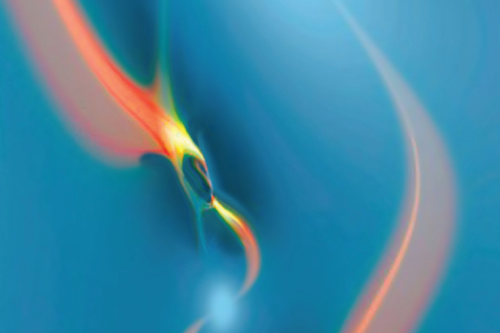Sondra Barrett is a biochemist whom you are as likely to find meditating or performing a qigong movement to drum music as peering into a microscope. For her, the visible and the invisible are not so much reflections of each other as places along a great continuum. Biological cells are more than the basic constituents of life, she says in her book, Secrets of Your Cells: Discovering Your Body’s Inner Intelligence; they are “little crucibles of measurable, discernible biochemical interaction that also carry the seeds of divinity.” They might not be self-conscious in the sense of “I think therefore I am,” but they embody consciousness. They have memories—lymphocytes, for example, are immune cells that recognize specific viruses—and they carry the blueprints of our familial past in their DNA and, very possibly, the accumulated wisdom of the ages.
Cells communicate—they pass messages on to one another, and they respond to the messages that we send them. They communicate with us, too, if we properly attend to their voices. “I have come to understand myself as a ‘code-finder,’” Barrett writes, “whose unexpected path is to uncover and make visible secret messages hidden in the very architectures of life that build us, as well as our holy traditions. I see sacred geometry in our molecules and I see a story of creation as told by our molecules….By teaching the new field of body-mind medicine, or psychoneuroimmunology (PNI), I became convinced of how our healing systems are all connected.”
Just as we do, our trillions of cells breathe, eat, assimilate, eliminate, recycle, and regenerate. They thrive in community and in relationship to one another; they sense their environment and respond to it; they recognize enemies and attack them, and they recognize friends, whom they embrace. Like us, they reproduce. And like us, cells are destined to die. “Apoptosis” (from the Latin for falling leaves) is the name that scientists give to the gentle process by which cells are sloughed off and recycled. Fascinatingly enough, cancer is partly what happens when genetic mutation causes a cell to lose its programming for self-destruction.
It is not unscientific, Barrett argues, to presume the effectiveness of visualization and prayer and other mind/body healing practices. It might just be that science has yet to recognize the specific mechanisms and mediums through which consciousness and cells resonate—and how we can use them to rewire ourselves for serenity and health and thankfulness instead of illness and stress and despair.
This is where anthropology, spirituality, and biology converge. Consider the double helix, an image that recurs constantly in artwork and mythology. It can be found on cave walls and on the Caduceus, the serpent-entwined staff of Hermes that is the symbol for medicine; the spiral is a form that occurs on both vast scales (galaxies) and small (conch shells)—and it is an ancient symbol of the womb. When the atomic structure of DNA is portrayed graphically, it looks uncannily like a mandala—the colorful Hindu or Buddhist geometric figure that represents the universe. As Barrett writes:
The psychologist, the religious believer, the medical scientist, and the mystic or the shaman each offer a different explanation of how imagery works to benefit health. The psychologist may say we are changing our conscious thoughts to align with deeper, purpose-driven unconscious beliefs. The religious person may say God is hearing a prayer and answering it. The scientist may say that imagery is changing the neurotransmitters, molecules, and cellular networks of the body. The mystic and the shaman may say that we’re changing the energy surrounding the situation and that this allows change to take place. In spite of the variety of theoretical constructs about the mechanisms of the imagination, both how and whether it will work as we wish it to are part of the great mystery.
The brain may be the organ that organizes our thoughts, Barrett writes, but consciousness is distributed throughout our bodies. Trigger one neuron and holographic waves stimulate billions of cells. The process works in reverse, too—when we learn to attune ourselves to them, our cells can teach us a better way to live.
Barrett calls Secrets of Your Cells the harvest of her lifelong journey to wed the worlds of science and spirit. Filled with personal stories, meditations, and practical exercises, it is both a guide and a playbook; an introduction to our microscopic selves and an invitation to embrace the cosmos.




1 Comment
Bob Weisenberg
Selected for Best of Yoga Philosophy.
Bob W.
Yoga Demystified